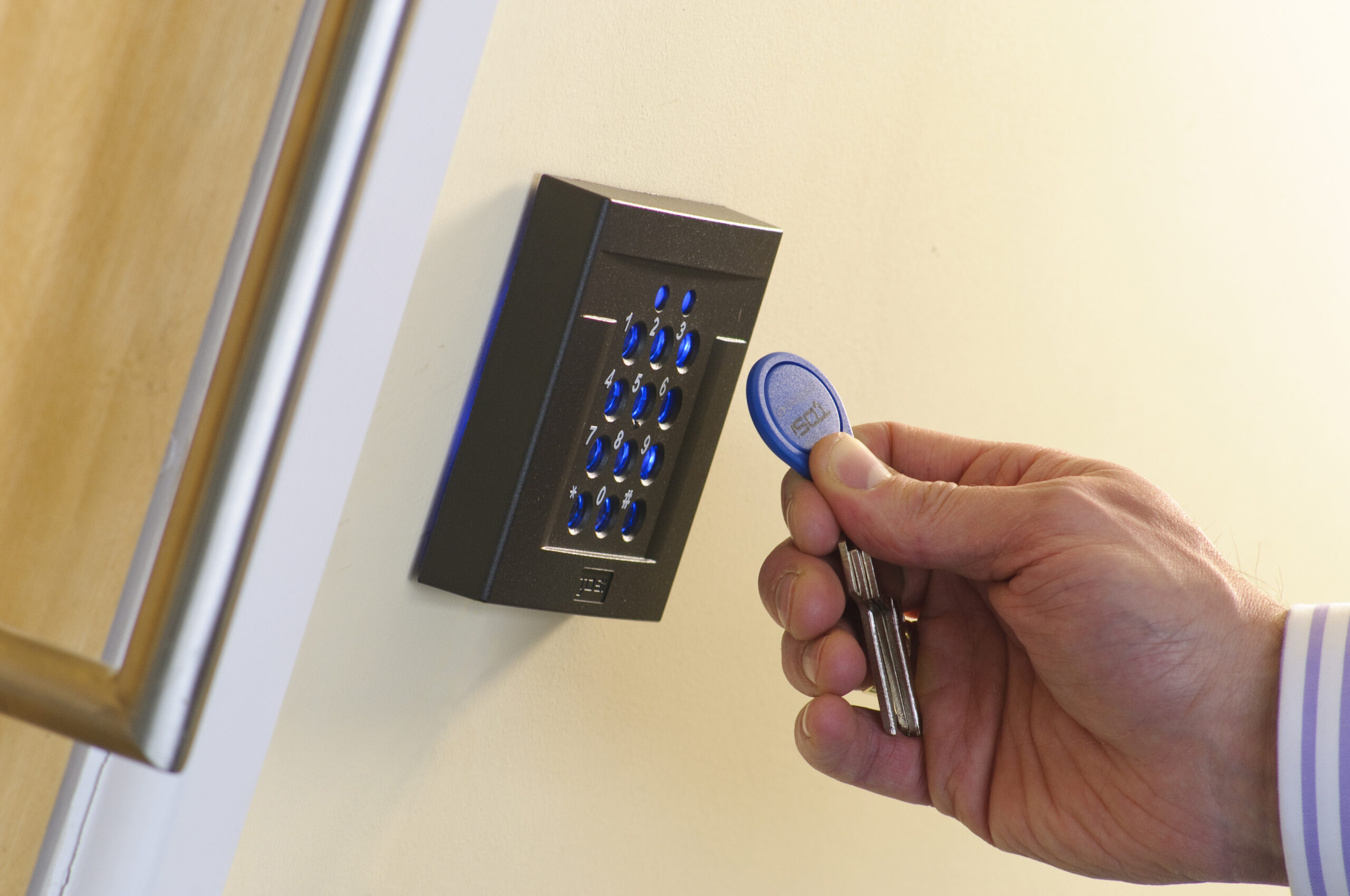With restrictions easing, more buildings are opening up to members of the public. At the same time, increasing numbers of people are now starting to make their way back into physical workplaces once more. It’s a positive move towards some kind of greater normality. And it’s also a moment to take stock of what other measures need to be implemented, on top of the Covid-secure requirements, to make sure that people and property are as safe as possible. That should include reviewing the arrangements that are in place to ensure that the right people can access the areas they need to, and those who shouldn’t be there are kept out.
What would be the most suitable access control system for your premises?
At the most straightforward level is the simple door lock where the people who need access have a physical key. For smaller premises with a very straightforward layout then that is a perfectly effective solution.
But as premises get more complex, a more sophisticated answer is usually needed and there are all kinds of access control systems available to address a range of requirements. Options such as door keypads have been around for several decades and provide a simple and inexpensive mechanism for authorised people to be given the code to open doors as needed. Remote access control options allow people to be ‘buzzed in’ remotely after they identify themselves via an intercom or camera-based system – although obviously that does require someone to be available to verify who is requesting access. Developments in technology have led to solutions like biometric security too which use an individual’s unique physical characteristic, such as a fingerprint, to identify them and permit them to enter an area.
Managing security risks in a Covid-safe way
Some access control systems can present an issue in terms of being high-touch surfaces however. This hadn’t been a major concern but of course the recent pandemic has thrown the spotlight onto hygiene in general, and clearly from that perspective there is a lot to commend contactless options. Biometric access control can reduce the need for contact with a surface, and proximity readers are another alternative. They use contactless proximity access cards that send out a signal to a door access reader to enable the individual to go through it. The cards can be quickly deactivated if necessary: if, for example, a card was stolen.
The drive towards contactless has also meant the increasing popularity of access control systems that make use of smart phones and other mobile devices too as keys for smart locks. A few years ago, that might have been outside quite a few people’s comfort zones! But it’s well recognised that the pandemic has encouraged us all to embrace technology more readily; many people are now well accustomed to making contactless payments and using apps like Apple Pay. So it seems reasonable to expect that at least some of these types of issues that companies may once have regarded as barriers to adoption are less likely to be regarded as problems now. And it has the significant advantage that people tend to take good care of their mobile devices (which cannot always be said for proximity cards!) and are considerably less likely to lend them to someone else too.
Creating a safe and secure environment
While attention has inevitably been focused on Covid-related concerns, physical threats and security breaches continue to pose real problems that must be addressed. By putting access control solutions in place, you’re protecting everyone who uses your buildings whether they’re employees, contractors, visitors or any other kind of user such as student, patient or resident.
There are many practical solutions that will meet requirements depending on the budget and level of access control that a company or organisation needs. That might include bespoke blended solutions that incorporate different access control systems, including gates and barriers. If you would like to know more about the range of access control solutions we offer, please do give us a call on 01352 755 866 or alternatively you can get in touch with your local branch.
